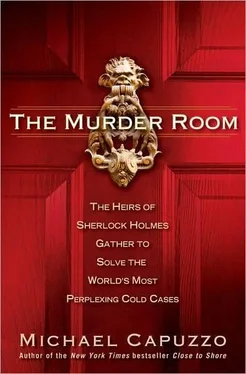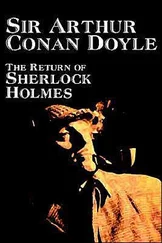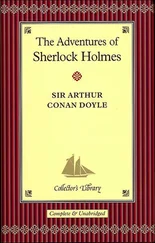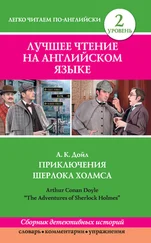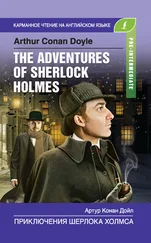“So I’m thanking him and he asks me, ‘Bill, how much do you stop, really? Give it to me straight.’ Murray was a good guy so I told him, ‘Eh, two percent. Washington says it’s ten percent, but it’s not close.’ ”
It was June 1991. Out on the river low brown air shrouded the tankers, but above was a clear sky in the east with the feel of the sea in it.
“What’s the moral of the story?” the ASAC said. “Six months later we stop a little gold Buddha statue at the airport. We drill a hole in it and heroin spills out-two million dollars’ worth on the street. We work the case through informants in Asia and trace it back to the shipper-it’s Murray. We arrest Murray.”
Fleisher shrugged. “I guess he liked his odds at two percent.”
The agents laughed. The agents were a proud, veteran crew, working big cases all over the world-Operation Steeltrap in San Francisco targeting Japanese steel industry corruption; Operation Florida on smugglers’ money-laundering. They nailed mobster “Fat Vinnie” Teresa, who’d given up Meyer Lansky and went into federal witness protection, where he smuggled Komodo dragons until O’Kane went undercover as a gay entrepreneur dragon buyer and got sixty hours of tape. They raided a Brooklyn warehouse, busting two Colombians and $60 million in cocaine that came in on a Baltimore freighter hidden in the false sides of emollient barrels. “We used the old tire-kick test,” Fleisher quipped to the press. “We got a dull thud instead of a ping.” It was important, dangerous, all-consuming, thrilling work, and the only way to do it was to think that it made a difference. In other words, not to think about it.
“Eh, what are we doing this for, men?” Fleisher asked, waving his pinkie ring.
The ASAC had become a critic of the war in which he was a four-star general, what President George H. W. Bush called the war on drugs. “I’m tired of sending my men undercover-good men with families, friends of mine-wondering if they’ll come home,” he said. “For what? Prohibition didn’t work, and it got more Customs agents killed than at any time in history.
“I’m honored to be in a long line of distinguished federal officers,” he quipped, “such as George Armstrong Custer. This is my last stand.”
The numbers were absurd. Customs had time to inspect only 3 percent of the three million containers arriving annually in the Philadelphia ports alone, and it took eight inspectors all day to open 1,500 boxes in a single container. With its large port and central location on the East Coast, the world’s largest and deadliest Colombian drug cartel had chosen Philadelphia as the perfect hole to stuff crack cocaine through to feed a hungry America. The port was FedEx for smugglers.
Fleisher’s nine drug smuggling agents were also expected to cover a dozen Pittsburgh port terminals on the Ohio, Monongahela, and Allegheny rivers, the ports of Erie, New Jersey, and Delaware, and the Pittsburgh, Harrisburg, Allentown, Wilkes-Barre, Wilmington, and Atlantic City airports.
He oversaw his empire from a small rectangular office with an old wood desk, credenza, two visitor’s chairs, thin carpeting, white walls-“standard government bureaucrat,” he said. As if to express his unease, the walls were conspicuously bare. Settling into his crowning federal assignment, he’d hung none of the dozens of awards and commendations from a brilliant career. “I’m not into ego art anymore,” he said with a shrug. Only two framed artifacts hung on the wall-a letter of praise from FBI director William Webster, and a portrait of a man with a wide head and brazenly arrogant eyes, wearing a greatcoat and cravat of nineteenth-century Paris.
When he wasn’t high on the adrenaline of leading his men, he took solace in a routine as predictable as the sun. Every day on his way to lunch he took the stairs to appease his wife and doctor, then drove the government Crown Vic the ten blocks to the oyster house he had patronized for fifty years. He ordered the traditional oyster stew with heavy cream, the same dish he had enjoyed with his father and grandfather at the same table, served by the same waitress he had flirted with when they both were young. The ASAC was a very sentimental man.
The job took a toll on Fleisher. He could not tolerate failing; the stakes were too high. One night, at home, he wrote a Declaration of Independence Against Drugs for children in Philadelphia. If there was anyone worth fighting the drug war for, it was innocent children. His men found the powerful ASAC pensive at his desk. His ruminations turned bleak and philosophical. He had taken to discussing the tender hopes of redemption linking Yahweh, Buddha, Muhammad, and Christ. A paperback copy of Victor Hugo’s Les Misérables had replaced his own book on interrogation techniques in his top drawer.
In a sentimental mood, he would open the well-thumbed paperback of Les Misérables and discuss the classic nineteenth-century novel of the French Revolution in light of the ongoing debate on whether law enforcement should be punitive or redemptive.
“This is my favorite scene in all literature,” he would say. It was the famous moment when Jean Valjean, the thief who steals to feed his family, is caught by the gendarme stealing a basket of silver from old Bishop Myriel, who had sheltered the ex-con for the night. Valjean is hauled before the bishop for punishment, but the bishop says there has been a mistake, he gave Valjean the basket of silver as a gift but the ex-con forgot the silver candlesticks, which the bishop now hands over to him. The thief is stunned by the force of forgiveness, and the bishop says, “Do not forget, never forget, that you have promised to use this money to become an honest man. Jean Valjean, my brother, you no longer belong to evil but to good. It is your soul that I buy from you; I withdraw it from black thoughts and the spirit of perdition, and I give it to God.”
Fleisher could not read the passage without looking up, his eyes wet with tears.
“This is what I want to do with my life. I want to devote my life to what really counts, redeeming the suffering, fighting the battle of good and evil. I want to be a force for good. I want to buy souls.”
CHAPTER 22. THE DEATH ARTIST
No woman was so young, blond, and lovely, no feeling so pure, no night so exciting as Tuesday: Polish vodka, pale Eastern European skin, dazzling white light that cleansed the darkness.
If it was Tuesday, it must be Joan.
It was Tuesday evening in the art studio and home of Frank Bender, the Casanova of the Caliper, the Da Vinci of the Dead, the greatest forensic artist who ever lived.
Bender was laughing with unadulterated, adulterous joy. His laughter rang from beneath the floor in the center of the warehouse, from the underground room, the pit. He was five foot eight, slim and muscular, an ex-boxer with a leprechaun’s grin and light hazel eyes of manic intensity. MOM was tattooed on his arm from his days in the Navy, a scar sliced his lip from a beer-bottle fight, and just above his groin was a butterfly tattoo he had displayed in public, dropping his drawers for a comely barkeep.
Now in his fifties, Bender was making a living doing commissioned sculptures for clients around the world and diving into the Delaware River ’s polluted waters to repair damaged tugboat propellers. In the dark cold waters of the river he was like nobody else, feeling blindly the nicks on the blades with the gift of his hands. In his studio, laying hands on the bones of the murdered dead, he felt his psychic visions and molded clay busts of the decayed and unidentified dead, of fugitive killers. Seven Most Wanted killers were sitting in jail, and many more victims had been avenged, because of Bender’s gift for seeing dead people. His forensic art had provided Bender with fans around the world. He was profiled on 60 Minutes; Esquire named him “Man of the Month.” Cops were awed and spooked by his wizardlike powers. The work occasionally involved opening graves and cutting off the heads of corpses like some Dracula avenger, being chased by gangsters, and checking through airports with a head in a suitcase. Bender needed, he said, to “download the horror.”
Читать дальше
